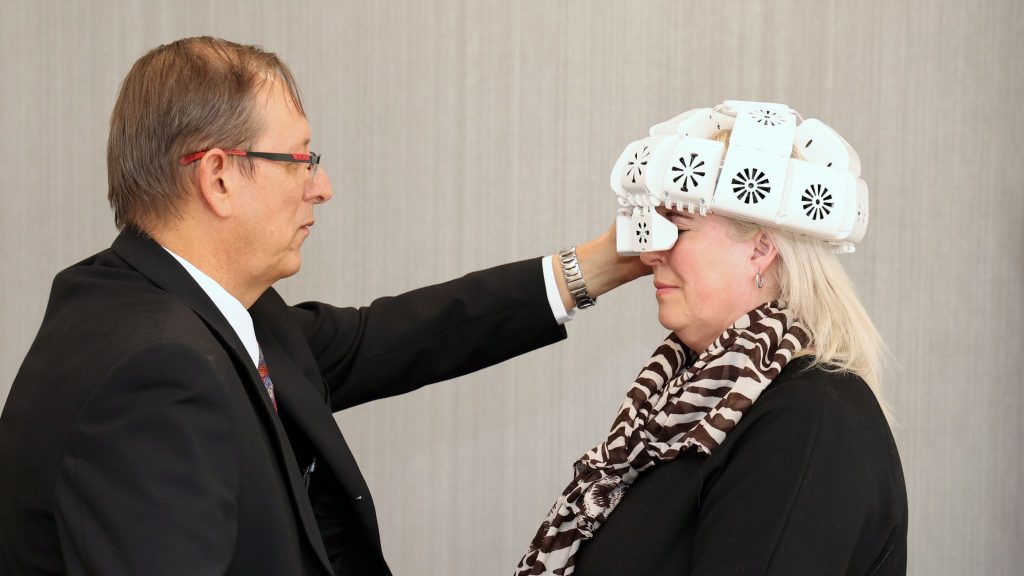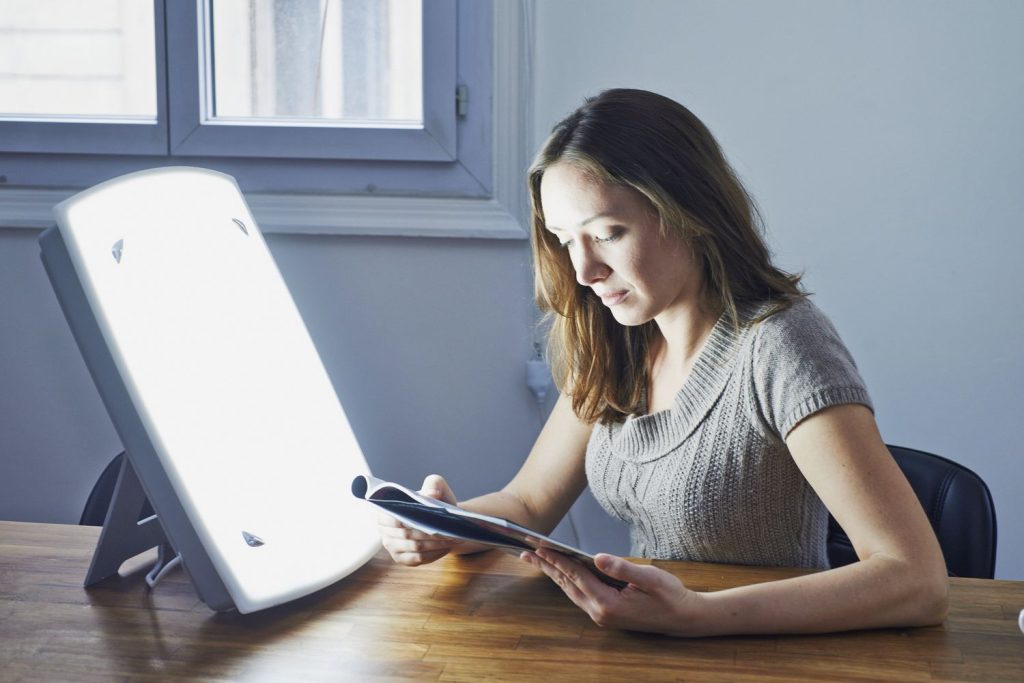Worldwide, many people are impacted by dementia, a neurogenerative condition. Hence, as more and more people struggle with dementia, scientists are doing everything they can to constantly introduce new and improved ways of treating this disease.
Since dementia’s worst symptom is insomnia, which disrupts the circadian rhythm, naturally, many dementia patients look for the right solution. So, does light therapy help dementia? How to make this therapy more efficient?
You can find the answer to your questions and additional useful information in the sections below.
Let’s begin!

Source: news.sky.com
Does Light Therapy Help Dementia?
Insomnia is one of the worst symptoms that people with dementia struggle with. This symptom comes from the disrupted circadian rhythm that this condition tends to cause.
This rhythm keeps your body in balance, meaning it acts like a biological clock that helps you sleep when it’s night and wake up when it’s the day, among many other things. So, what happens when the circadian rhythm is disrupted? People need to sleep during the day and stay awake at night.
When people were introduced to light therapy, they reported significant improvements in their sleeping, meaning they did not experience as many sleeping disturbances as before this therapy.
Therefore, to answer the question, does light therapy help dementia? Yes, it may. Based on the best research done so far, it is clear that light therapy might have positive effects in improving insomnia in people with dementia, meaning improving their overall well-being.
However, as not everything is black and white, there are some other essential things you need to know regarding dementia and light therapy, such as how to make the light therapy as efficient as possible, so be sure to keep reading.
What does the research show?
One of the largest and most well-conducted research reviews found that introducing light therapy to people who have dementia might result in regulating the circadian system, meaning the patients’ daytime sleeping is decreased and their night-time sleeping is increased.
That being said, much more thorough research is needed on this topic, but the results are quite promising so far. People have reported improving their symptoms after only a few light therapies.
As light therapy is gaining popularity for treating and helping various conditions, scientists do better and improved research all the time to increase the efficiency of this therapy even more.
More research is needed regarding light therapy and dementia, but from what we can see until now, the results are positively promising.
Controlled human trials benefits
- Enhanced memory and recall
- Better sleep and fewer disturbances
- Less anxiety, wandering, and angry outbursts
- Improved executive function
- Better task-switching ability

Source: verywellhealth.com
How to Administer Light Therapy
One of the greatest features of light therapy is that besides the therapy facilities, it can also be administered at home. The process is extremely easy, and many benefits come from this.
First, by administering the light therapy at home, you will feel much more relaxed from the start than going to the hospital or other facilities that provide this therapy.
Second, besides the benefits of the light therapy itself, which we will look at in a moment, you may work on your discipline by being calm during the administration, meaning your anxious or angry behavior should also significantly improve.
Third, the lightbox you will need for the therapy will cost you much cheaper than taking the patient elsewhere, so you might save a significant amount of money that could be distributed to other medications, vitamins, supplements, etc.
Although many more benefits may come from light therapy, these three are the most important ones with the most significance for the dementia patient.
Successful administration of bright light therapy
Consult with your doctor
The first and most important thing you will need to do before you start light therapy is to talk to a professional. The best will be if you talk to your doctor, who monitors your condition and symptoms closely.
As a few minor side-effects can occur from this therapy, you will need to provide information, such as whether there is a family history of macular degeneration because the strong light can negatively affect the patient’s eyesight.
Second, you must disclose the medications because some can cause photosensitivity. Also, you must be aware that mild headaches might occur.
Get the lightbox
Before you get a lightbox, you need to ensure that it produces 10,000 lux and look for a UV-free light. You do not want to expose the patient to ultraviolet light.
Administer the therapy
While talking to your doctor, they will advise you on the optimal amount of how long the sessions need to last. However, the average amount is 30 minutes a day, and the lamp should be 2 feet away from you. Also, make sure that the light does not go directly to your eyes.
Do not skip sessions
Skipping sessions will not bring you the wanted results and may not have the full effect this therapy provides.
Therefore, it is of essential importance to administer light therapy regularly, a few times a week, for a prolonged period. You should consult with a professional about it.
Read more: What Are the Negative Effects of Red Light Therapy?
Conclusion
So, does light therapy help dementia? We are sure that now you have no doubt. Besides that, we have elaborated on the crucial things you need to know regarding people with dementia and light therapy and how to make the most out of this therapy.
We hope that our expertise has helped you with the light-therapy ambiguities you might have had. Now equipped with that knowledge, you will better understand the connection between light therapy and its effect on improving dementia symptoms.

Hello! I’m Nicky Rodgers.
Almost a decade ago, I got excited about the idea of employing alternative methods like red light therapy to create a healthier life.
To learn more about it, I did my Certified Light Therapist course from Photonic Therapy Institute and started looking into the intricacies of how light therapy influences several bodily processes. Before I knew it, my interest had become an obsession which resulted in this extensive blog.
Here, I offer countless well-researched articles to help you understand the benefits and uses of light therapy. I hope this information gives you a head start in your wellness journey.
